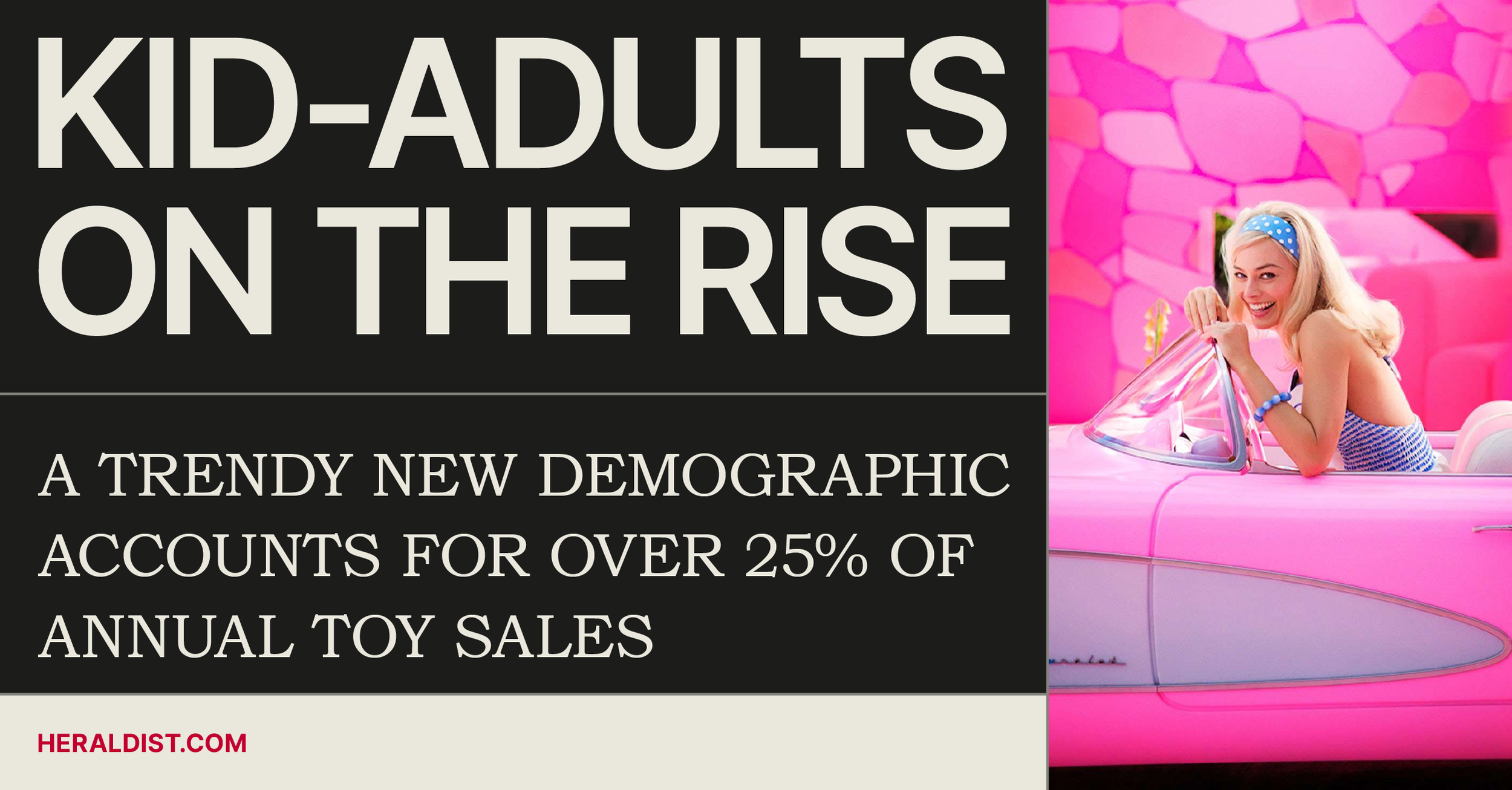Kid-adults are on the Rise: A Trendy New Demographic Accounts for Over 25% of Annual Toy Sales
It's clear that adults are no longer the way our parents were in our time, and it's best seen in how people 30+ relate to nostalgia.
“The definition of adulthood has evolved,” says Jeremy Padawer, chief brand officer at toy company Jazwares. “What it used to mean, to be an adult, was to be a very upstanding, serious member of society. And to do that, you had to demonstrate it intellectually, emotionally, in every other way.” “Now we feel a lot more free to express our fandom as a part of our adulthood,” he said.
It's fascinating to observe the shifts in the toy industry's consumer behavior as well.
A new demographic, known as the "kid-adults trend," now makes up more than a quarter of yearly toy purchases.
Many brands are now targeting adult customers more heavily. Lego, for instance, has launched an "Adults Welcome" section on its website, featuring an extensive line of adult products since January 2021. Similarly, American Girl has seen a surge of Generation Z and millennial consumers buying dolls and visiting its cafes, where they share their experiences on social media. As a result, American Girl cafes have started selling alcohol and expanding their menu to cater to more mature tastes. Disney + isn't just about kids anymore, either, and so on.
This trend may not be coincidental, and Barbie just confirms the shift. Since the film's release, Barbie toys sales have increased by 30%.
It has quickly become commonplace to praise the movie's marketing campaign, one for the centuries and most likely unrepeatable. Still, it is worth mentioning the holy trinity that made this happen: product partnerships, immersive activations, and brand integrations. Very aptly instrumentalizing the simplest of brand assets - the brand color pink - everything around us turned into a Barbie world. Everybody jumped to cash in the Barbie mania, from Google to Gap, Airbnb, Nintendo, Burger King, Fossil, Nike, or NYX Cosmetic. The earned media was huge and did not need that many nudges from advertising tools: people loved playing with the Barbenheimmer memes, with the Barbie selfie generator, or with the human-size cut-outs sent to cinemas, all of these making the customers part of the hyper-surreal perfect pink doll fantasy world, engaging them and capitalizing on the most valuable content: the user-generated one.
I won't delve into the financial aspects and the paradoxes of a movie produced by a toy industry giant and written by a feminist indie director. Instead, I want to highlight the positive influence this movie has had. It has enabled the brand to connect with adult women through nostalgic brand references and sparked conversations with a diverse generation (men and women) which has given the Barbie brand a fresh start in a world that values diversity and that just naturally continues the natural story of the brand
Regarding Barbie, I believe the current nostalgia trend holds more significance than simply providing sweet memories. It is a valuable tool for women to reflect on their path to becoming the women they are today. By reconnecting with the Barbie dolls of their childhood, women may gain a better understanding of themselves and be able to redefine the meaning of womanhood in the present day.
By Manuela Dospina & Alexandra Florescu

